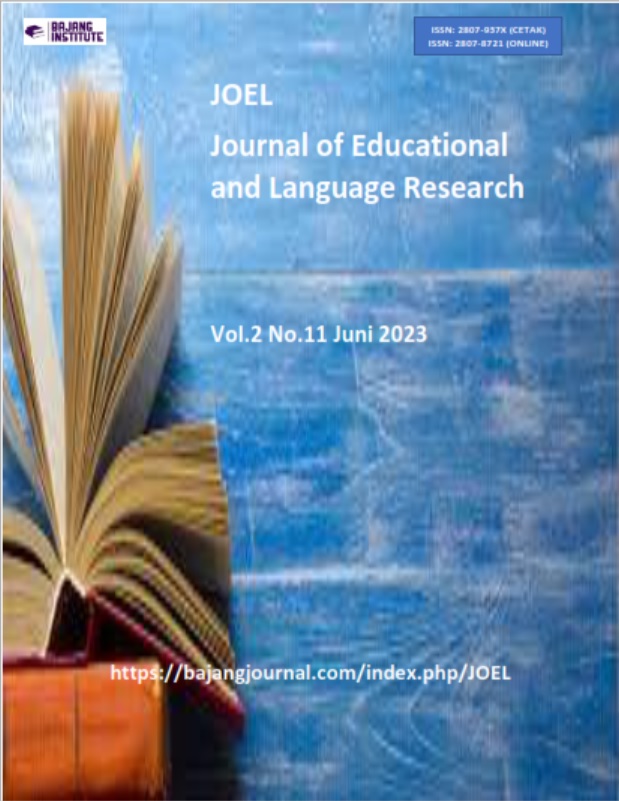DYNAMICS OF PRE-SERVICE TEACHERS’ EMPLOYABILITY IN 21ST-CENTURY NIGERIA: A FOCUS ON ENGLISH LANGUAGE TEACHERS IN EKITI STATE
DOI:
https://doi.org/10.53625/joel.v2i11.5978Keywords:
Dynamics, Pre-Service Teachers, Employability, English Language, NigeriaAbstract
This research sought to investigate the dynamics involved in employing pre-service English language teachers in public secondary schools in Ekiti State, Nigeria. Specifically, the research investigated the dynamics involved assessment of the applicants’ pedagogical skills, personality and classroom management traits in a 21st-century paradigm. The secondary data emanated from the Practical Teaching Assessment Rating Scale (PTARC) and Oral Competence Test (OCT) on 114 unemployed English language teachers. Four research questions and two hypotheses were formulated and raised to guide the research respectively. The research population consisted of 1,050 graduate English language teachers from Ekiti State University, Ado- Ekiti, College of Education, Ikere Ekiti and the affiliated degree programme of the University of Nigeria, Nsukka. The Ministry of Education, Science and Technology, Ekiti State, selected 114 English language teachers for the examination. The sample size of 114 was derived from the selection process aforementioned. The findings of the study revealed that the English language teachers were employable based on impressive performance in oral and theoretical assessments. The research provides recommendations on the need to include digital interactive courses in oral communication and instruction in spoken English while emphasizing earner-friendly strategies of teaching in Ekiti State public secondary schools
References
Adeyemi, B., Adeyemi, B. B., & Adeyemi, I. D. (2021). Education for Employability in Nigeria: Stakeholders’ Assessment of Missing Gaps in the Current Schools Curricula. EAS Journal of Humanities and Cultural Studies, 3(2), 97–102. https://doi.org/10.36349/easjhcs.2021.v03i02.004
Aina, J.K. (2016). Employment of untrained pre-service English language teachers in schools: The Nigeria case. Journal of Studies in Social Sciences and Humanities, 2 (2), 36-40).
Mainga, W., Murphy-Braynen, M. B., Moxey, R., & Quddus, S. A. (2022). Graduate Employability of Business Students. Administrative Sciences, 12(3), 72. https://doi.org/10.3390/admsci12030072
National Commission for Universities National Universities Commission. (2022). Benchmark for Core Curriculum and Minimum Academic Standards (CCMAS). National Commission for Universities.
Odumuh, T.O and Famogbiyele, O.T. (2018). Language Teaching in a Globalized and Digital Age: Implications for Teacher Preparation and Professional Development in Nigeria. Elixir International Journal of educational technology, 116, 50038-50042.
Okolie, U.C., Nwosu, H.E. & Mlanga, S. (2018). Graduate employability: How the higher education institutions can meet the demand of labour market .Higher Education Work-base Learning, 9(4), 13-14.
Ossai, A.G. & Ezinwa, O.I. (2022). Managing University Education for Employability in Nigeria: The Way Forward. British Journal of Education, 10,(6), 37-40.
Taiwo, R. (2013). Language teaching and the 21st century teacher competencies. Journal for Teachers of English and Communication Skills. 10 (1), 2-6.
Tatar, S. (2019). Employment of English Language Teachers in an EFL Context: Perspectives From School Administrators. Profile: Issues in Teachers’ Professional Development, 21(2), 45–61. https://doi.org/10.15446/profile.v21n2.72648
United Nations Children’s Fund ( UNICEF). ( 2019). Global Framework on Transferable Skills. New York, UNICEF Education Section. www.unicef.org/education. Pp. x-ix.
Downloads
Published
How to Cite
Issue
Section
License
Copyright (c) 2023 JOEL: Journal of Educational and Language Research

This work is licensed under a Creative Commons Attribution 4.0 International License.











